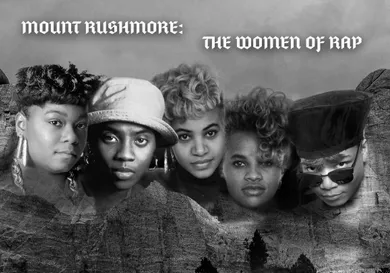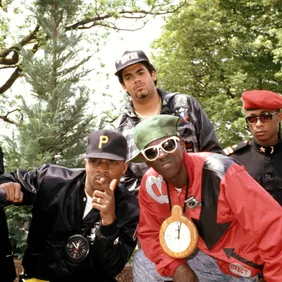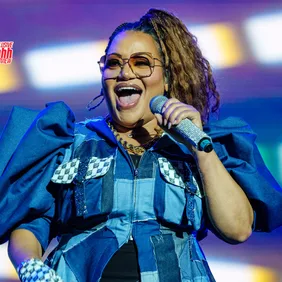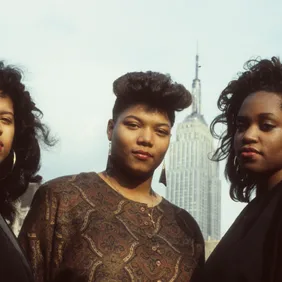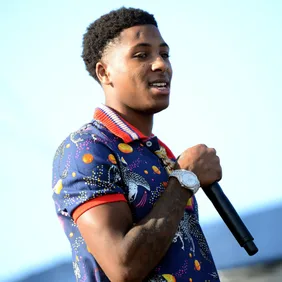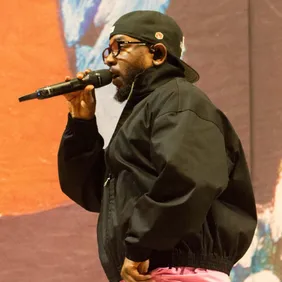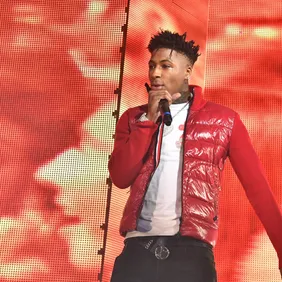Conversations about Mt. Rushmore’s of Hip Hop consistently ignite passionate discussions. “Top Rappers” lists evoke similar energy, but when discussing artists who deserve their countenances etched in stone as the most impactful, influential, or talented figures in Hip Hop, people can become downright vicious. We’re well aware that any Mt. Rushmore additions will be debated—from those who believe certain names shouldn’t be included to others who think their picks are better suited.
For Women’s History Month, we’ve assembled a collection of female emcees who have not only defied the constructs of a male-dominated industry but have also thrived, broken records, created globally influential brands, topped several charts, earned multiple accolades, and, in their own ways, shifted how the world views women in Rap culture.
In an effort to bring structure to the expansive history of Hip Hop, we’ve not only crafted Mt. Rushmores, but also separated them into three timeframes: Old School, the Golden Era, and New School. Four female rappers have been included in each period, and while this is certainly not exhaustive, we’ve highlighted notable moments from each of their careers that aided in shaping them into the internationally recognized superstars that they are today.
Old School
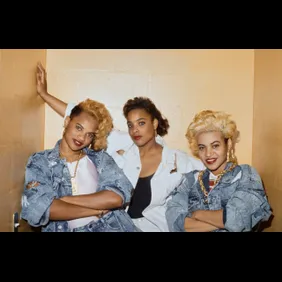
The inception of Hip Hop looked much different than the Rap scene we’re familiar with today. Although aspiring emcees were blossoming from every borough in New York City, DJs were staples who were just as, if not more, popular than artists belting out bars on the microphones, and crews were bustling on every block. In today’s technologically-driven culture, finding new rappers comes with ease as social media gives artists access to a global audience with the click of a button; yet, “Old Heads” remember when new music was shared via cassettes that were passed around from one hood to the next.
In those early days, rising artists had no idea that Rap’s reach would be what it is today—and many rappers who fondly look back on those times reminisce on what it was like in crowded basements, standing shoulder-to-shoulder, waiting for their chance in the spotlight. Run-D.M.C, The Sugar Hill Gang, LL Cool J, Kurtis Blow, Biz Markie, Slick Rick, DJ Kool Herc, Grandmaster Flash and the Furious Five...they are familiar names whose legendary statuses are indisputable.
However, Roxanne Shante, MC Lyte, Salt-N-Pepa, and Queen Latifah are just a handful of entertainers responsible for propelling Hip Hop forward during a season of the genre's history when women were often overlooked. The significance of their voices reverberates in today's culture, and they continue to command respect in every aspect of their personal lives and professional careers.
Roxanne Shante
Some of you just may be old enough to remember the “Roxanne Wars” that took place over the mid-1980s. Roxanne Shante became a driving force in Hip Hop when she released “Roxanne’s Revenge” at just 14 years old, an answer track to Rap group U.T.F.O.’s B-side release, “Roxanne, Roxanne.” This would lead to several artists jumping on the bandwagon with their own “Roxanne”-centered tracks— some would argue it was an archaic version of a song going viral and other artists capitalizing off of its success by releasing music in response.
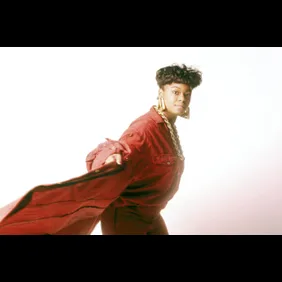
The popularity put Roxanne on the map as a young teen, one of few girls with a serious interest in entering the Rap game. Expectedly, Shante faced obstacles as a young lady in the industry, and although she would add her voice to local rap competitions, she was often curbed because of her gender. However, during KRS-One and Big Daddy Kane’s Verzuz last year, the Boogie Down Productions icon lavished Shante with compliments and spoke candidly about how instrumental she was in building the foundation of Hip Hop history.
Shante would go on to release two studio albums, Bad Sister and The B*tch is Back, but by 25-years-old, Roxanne retired her mic. A biographical film, Roxanne Roxanne, produced by Pharrell Williams and Forest Whitaker, was released in 2017. Although we hear much about who deserves the title of the “Queen of Rap,” Shante has been long hailed as the person who truly holds that title.
MC Lyte
Lana Moorer was just 12-years-old when she first began testing out her Rap skills in the early 1980s. The Brooklyn native initially went by the moniker “Sparkle,” but soon switched to MC Lyte. It would take a few years for Lyte to release her first single, “I Cram to Understand U (Sam),” and from the beginning, highlighting the struggles of residents in marginalized communities was important for the budding emcee. She was one of the dozens of artists to lend their voice to Boogie Down Production’s Stop The Violence Movement classic “Self Destruction,” a song about curbing the violence that plagued the Black community.
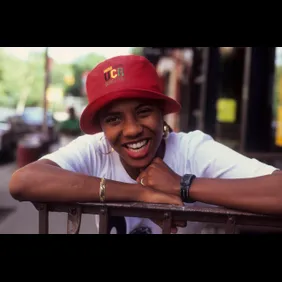
MC Lyte has shared stages with everyone from Public Enemy to Janet Jackson to Brandy, and in 1990, the music icon was named the first Rap artist to perform at Carnegie Hall. She was honored by the Smithsonian when several items from her career were included in the “Hip-Hop Won't Stop: The Beat, the Rhymes, the Life” exhibition and she continues to use her voice to empower other women in the industry as they navigate their careers. A philanthropist, public speaker, businesswoman, and respected emcee—MC Lyte’s legacy is unmatched.
Salt-N-Pepa
This dynamic duo emerged in the 1980s with eightball leather jackets and high-energy hits. Cheryl “Salt” James and Sandra “Pepa” Denton were joined by Deidre “DJ Spinderella” Roper and climbed their way up the Rap charts. Their first big hit was their now-classic single “Push It,” which was recently reimaged for a Frito-Lay Super Bowl LVI commercial and in Megan Thee Stallion’s single “Flamin’ Hottie.” Although this was the track that seemingly put them on the mainstream map, Salt-N-Pepa was already making waves with their Hot, Cool, & Vicious releases “Chick On the Side” and “Tramp.”
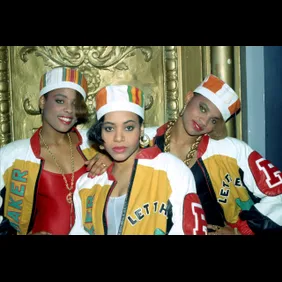
By the early 1990s, the group was entering new territory in their career as anthems like “Let’s Talk About Sex,” “Whatta Man,” and “Shoop” took over the airwaves, and Salt-N-Pepa became leading voices in conversations about safe sex. In 1995, they became the first female Rap act to take home a Grammy Award (Best Rap Performance by a Duo or Group – “None of Your Business”) and their milestones have continued for decades with multiple reality television series as well as receiving the coveted “I Am Hip Hop Award” at the BET Awards.
Although they suffered a highly publicized fallout with Spinderella in recent years, Salt-N-Pepa remains fan favorites and can be found in a city near you on tour. A dramatic look into their rise can be seen in their 2021 Lifetime biopic, Salt-N-Pepa.
Queen Latifah
The game changed for women in Rap once Queen Latifah released her classic hit “U.N.I.T.Y.,” but her influence on the culture began much earlier. The New Jersey native has been performing since she was a child, and although she’s known to be a prolific rapper and exceptional singer, Dana Owens was also once a beatboxer. The Flavor Unit icon has an extensive resumé that includes seven studio albums, her own talk show, and several film and television appearances, including Living Single, The Equalizer, Star, Girls Trip, The Little Mermaid, and Hairspray.
In recent years, longtime fans of the Queen have been begging for a follow-up album to her last studio release, 2009’s Persona. There have been murmurs of new music on the way, but Queen Latifah has been locked in with her production company and acting career. She’s amassed accolades that include multiple Grammys, a couple of NAACP and SAG awards, a Primetime Emmy, a Golden Globe, and a Lifetime Achievement Award from BET.
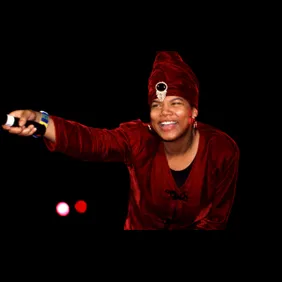
Yet, what makes Queen Latifah an icon and deserving of a Mt. Rushmore position isn’t just the honors she has amassed over her 30+ year career—it is her dedication to raising awareness in her music, as Latifah has always made space to pen lyrics about the inequities that Black women face. Music lovers can hear this proven on albums like All Hail The Queen or Black Reign, and her tracks “Ladie’s First” and “U.N.I.T.Y” continue to be the groundwork for empowering women in Rap and beyond.
Honorable Mentions: Monie Love, Ms. Melodie, L.A. Star, L'Trimm, Sha-Rock, Yo-Yo. J.J. Fad, Lady B
Golden Era
Arguably hailed as the greatest age of Hip Hop, the Golden Era is truly where the genre thrived at its peak. As the artists of the Old School were literally crafting Hip Hop and Rap as we know it, the emcees of this period had examples and influences to look back on as they determined how they would present themselves as entertainers. During this time, producers' significance would arise as their relevance became just as useful as DJs in rap crews.
Women flourished during this era, and often, their visibility in the scene was due to a co-sign, usually by an established male artist. Many partnerships such as these cleared space for women to be taken seriously as formidable contenders in the Rap arena, but it was the skill and determination of the artists themselves that would add their names to Hip Hop history with a golden pen.
This is the time when we hear much about Tupac Shakur, Dr. Dre, Snoop Dogg, UGK, Wu-Tang Clan, Jay-Z, Outkast, Biggie Smalls, but Lil Kim, Lauryn Hill, Missy Elliott, and Eve emerged with distinct sounds that reflected the neighborhoods they grew up in and the artists they admired. While these four ladies were vastly different sonically, in addition to their approaches to lyricism, they each were exemplary in pushing boundaries in Hip Hop—borders created by their male peers and redefined by women seeking their placement at the top.
Lil Kim
There was shock and awe when Kimberly Jones emerged as Christopher “The Notorious B.I.G.” Wallace’s protegé back in the 1990s. The sex appeal imprint already existed in Rap, but overall, Hip Hop was used to a tomboyish style by women emcees. Lil Kim’s inclusion in Junior M.A.F.I.A. solidified her placement in the ever-popular Brooklyn Rap scene. Still, her bars on the group’s Conspiracy tracks like “Get Money” and “Player’s Anthem” separated her from other women attempting to occupy that space.
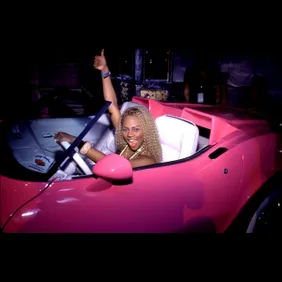
Her solo career is what launched her into a new stratosphere, and we can hear the influences of her earlier catalog— Hard Core and The Notorious K.I.M.— today. Like many other artists in Hip Hop, Lil Kim has had her name entangled in beefs, diss tracks, and legal troubles, but she has maintained a reputation as the Queen Bee of Rap. She mobilized her sensuality and gave other women in the industry the space to feel comfortable with showcasing their sexualities as they aspired to be hitmaking performers.
Lil Kim has toured the world, released five studio albums, including her classic I, and has been credited by her peers like Rihanna, Teyana Taylor, Cardi B, and Megan Thee Stallion as a major influence in their artistry. The Golden Era of Hip Hop is swimming with Lil Kim hits (“Crush on You,” “Magic Stick,” “Not Tonight,” and more) and her reach continues decades after she was introduced as a teen with dreams of money, power, and respect.
Lauryn Hill
This Fugees icon is one of the most respected artists in the industry and her career has been a case study for Rap lovers. As the only woman in The Fugees, Lauryn Hill quickly stood out beside cousins Wyclef Jean and Prakazrel "Pras" Michel, due to distinctive low-tone vocals, clever rhyme schemes, and effortless flow. When the trio first began, they were teens performing at talent shows, and at the time, the burgeoning style of female emcees was much like that of Monie Love or Salt-N-Pepa from the Old School era. Hill wanted to move in a different direction with her delivery and instead looked to artists like Ice Cube for inspiration.
Amid this musical creativity, Hill also pursued other artistic endeavors and starred alongside Whoopi Goldberg in Sister Act 2: Back in the Habit. It was there that her vocals were highlighted as she belted out “Joyful, Joyful” and “His Eye Is on the Sparrow.” Her silver screen praise was followed by the release of The Fugees’ classic The Score—an album that gifted us with “Ready or Not” and “Fu-Gee-La.” However, Lauryn Hill has been long praised for what has arguably been called one of the greatest Hip Hop albums of both the 1990s and all-time with her singular solo studio album, The Miseducation of Lauryn Hill. The record has been recognized by the Smithsonian National Museum of African American History and Culture and the Library of Congress, proving that its impact goes far beyond anything the New Jersey native could have imagined.
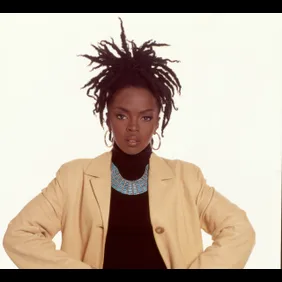
Although Hill continues to play shows worldwide, she has been vocal about the conscious move to live a creative life outside of the industry. For decades, fans have begged the star to follow-up Miseducation, but Hill seems content bending and moving artistically at her own pace. Still, the very mention of Lauryn Hill’s talents is enough to spark conversations about female emcees, causing debates regarding if there is another who can create on the same frequency of exceptionalism.
Missy Elliott
We can’t bring up the Golden era of Hip Hop without mentioning the overwhelming impact of Missy Elliott. Born and raised in Virginia, the innovative artist first received acclaim for her work with longtime collaborator and good friend Timbaland. Before the pair became Hip Hop’s eclectic, dynamic duo, Missy was in an R&B group in the early 1990s with Timbaland, a neighborhood friend, acting as their producer. They would receive their first big break thanks to Jodeci’s DeVante Swing signing the group to Swing Mob, expanding the creative crew to include Tweet, Ginuwine, Playa, and Magoo.
Missy’s work behind the scenes well before the release of her debut Supa Dupa Fly is unmatched; she and Timbaland were industry darlings after working on projects and singles for Aaliyah, 702, and SWV. Sean “Puff Daddy” Combs’ Bad Boy Records was enjoying similar successes at the time and wanted Missy to ink a deal with the coveted collective but instead, she decided to launch her own label. She and Timbaland not only continue to pen and produce hits for their peers, but they were able to develop an unprecedented sound that helped them climb the charts.
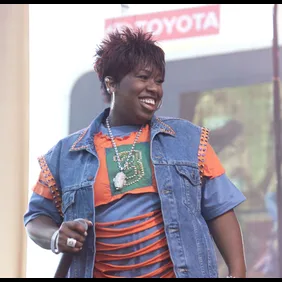
“Work It,” “Get Your Freak On,” “Take Away,” “One Minute Man,” and several other Missy-centered singles haven’t moved from fans’ playlists for decades. Missy has earned several Grammys, Billboard Music Awards, BET Awards, MTV Video Music Awards, and dozens of others that hopefuls attempt to manifest. She has been honored with inclusion in the Songwriters Hall of Fame and was bestowed a star on the Hollywood Walk of Fame. You can find the positivity-spreading, multi-talented entertainer continuing to work on new music while sharing motivational social media messages with her fellow performers.
Eve
With a short blonde haircut and paw prints across her chest, Eve reigned during the Golden Era. The Philadelphia Rap icon sat on her throne as the first lady of the Ruff Ryders, and her tough-presenting style mixed with feminine sensuality made her unmatched in the music industry. Prior to becoming a force in the Rap game, Eve worked as a stripper when she was 18 years old. It was a job that she held for only a month, but a chance encounter with Bad Boy icon Mase shifted her career path. She became motivated to take her music more seriously, and soon, she was testing the waters in an all-girl singing group.
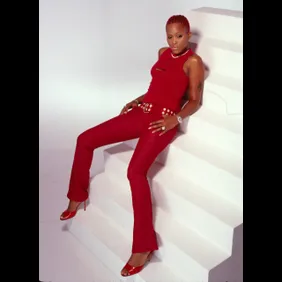
While signed under Dr. Dre and his Aftermath Entertainment umbrella, the buzz about Eve took over. Her appearances on fellow Philly artists The Roots’ “You Got Me” was stellar, and soon, she was formally introducing herself— and her women’s empowerment message— on tracks like “Love is Blind” and “Gotta Man.” Her debut studio album, Let There Be Eve…Ruff Ryders’ First Lady encapsulated a young star on the rise with a message to share as she stood side by side with forces like Swizz Beatz and DMX. It became clear that the Rap arena alone wasn’t her only focus, as she shared the Pop space with Gwen Stefani, she debuted on the small screen with her own television show, Eve, and garnered roles in film favorites like Barbershop.
Eve recently took the Verzuz stage with fellow Rap icon Trina and a global audience of fans joined to sing along to her classic hits. Since then, Eve has taken a break from her Rap empire and is enjoying her time as a new mom and Queens star.
Honorable Mentions: Foxy Brown, Amil, Charlie Baltimore, Sole, Remy Ma, Rah Digga, Lady of Rage, Lisa "Left Eye" Lopes, Da Brat, Bahamadia, Trina, Diamond & Princess, Gangsta Boo, Mia X, Shawnna, Queen Pen, La Chat, Heather B, Khia, K. P. & Envyi, Lady Luck
New School
Now that we’ve been updated with the influential voices of yesteryear, let’s ease ourselves into the New School. Women are undeniably dominating in this current generation of Rap and with each new year, a bevy of hopefuls emerge with stars in their eyes, hoping to take over the charts with each new release. Rap spaces can often feel cluttered; we exist in a time when there are more musicians occupying the industry than ever before. Still, among the chaotic, artistic fray, women have captivated listeners, broken records, and established new expectations from female rappers.
Where Lil Kim set the stage for the acceptance of women dropping explicit bars that battle similar lyrics by male peers, the New School of ladies has taken things to a different level entirely. Whether it's over a Drill beat or Pop-style production, many women in this generation of rappers are proving that they aren't only performers, but students of Rap.
Like the other time periods covered, this New School has far too many talents to choose from. Still, debates concluded that no others have dominated quite like Nicki Minaj, Cardi B, Megan Thee Stallion, and Doja Cat. Some of these artists have had tense moments with one another, and others have collaborated on chart-topping hits together, but they all are reformulating women's voices in Hip Hop—and we're watching it happen in real-time.
Nicki Minaj
There was at least one artist on this Mt. Rushmore that was difficult to place— Nicki Minaj. She’s a solidified Rap icon whose impact on the culture is untouched, and Minaj has proven her deserving place on any Top Rapper list, regardless of gender. It is obvious that compared to others on the New School list, Minaj is a standout. We decided to place her here because she didn’t quite emerge until over a decade post-Golden Era, after inking a deal with Full Force as a member of a Rap group with her ex-boyfriend, Safaree Samuels.
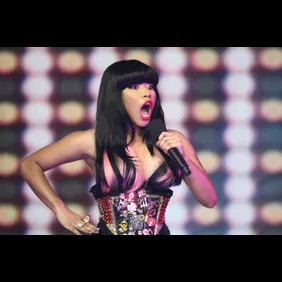
By 2007, Minaj dropped her first mixtape Playtime is Over, but it was her third, the recently re-released Beam Me Up Scotty, that truly put Minaj on the mainstream map. From one career leap to the next, Minaj added more jewels to her Queen's crown and by the time she signed a contract with Young Money Entertainment, she had taken her place on the throne as the new leader of the ladies in Rap.
Whether she stands aside Drake on hits like “Moment 4 Life” or adds her voice to other monumental collaborations, including Kanye West’s “Monster” or Ludacris' “My Chick Bad,” everything Nicki Minaj touched turned gold…or diamond. Her Barbie theme took over the globe with the help of Pink Friday, and its follow-up records were just as monumental. Minaj has arguably been one of the first marketable female Rap artists to dominate in multiple genres, and her collaborations with Katy Perry, Ariana Grande, and Karol G can attest to that. Love her or hate her, one thing you cannot do to Nicki Minaj is discredit her pen game, talent, and influence, and you can see the reflection of all those qualities in female rappers looking to follow in her footsteps.
Cardi B
From one timeline to the next, millions of social media users hope one of these popular platforms will be the catalyst for superstardom. It is something that isn’t as far-fetched as one thinks because the formula has worked with several successful, beloved entertainers, including Cardi B. Many like to credit the Bronx beauty as getting her start on Love & Hip Hop New York in 2015; however, Cardi was already Instagram famous before Mona Scott-Young formulated Cardi’s VH1 introduction. The rapper’s over-the-top personality and filterless commentary entertained social media users and undeniably, she made for great TV.
It was on Love & Hip Hop that fans first saw the budding rapper chase after her dreams, unashamedly. The world watched as those hopes were deferred while she faced one obstacle after another, making her a relatable character. With visibility on the rise thanks to her television appearance, new opportunities unraveled for Cardi— and she carefully capitalized on each moment. She released her first mixtape, Gangsta B*tch Music, Vol. 1, in 2015, and two years later, she was at New York Fashion Week celebrating her deal with Atlantic.
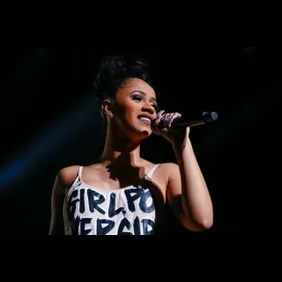
From there, the climb was quick; Cardi’s debut single “Bodak Yellow” was a smash hit, helping her introductory studio album, Invasion of Privacy, earn her a Grammy win for Best Rap Album. She has gone down in history as the only woman to win in the category as a solo artist and arguably, Cardi B hasn’t even peaked. Megan Thee Stallion helped Cardi take over Summer 2020 with “WAP,” and the New York rapper topped herself by storming Summer 2021 with “Up.” Cardi's hyper-sexualized lyrics and graphic imagery have made her an enemy of those with conservative temperaments, and with each new threat of a boycott, Cardi racks up higher numbers.
The Diamond-certified rapper has seen her fair share of spats with her peers and she often goes at it with online critics, but it's her determination that makes her a magnifying force in the industry.
Megan Thee Stallion
Like her New School peers, Megan Thee Stallion got her big break after going viral on social media. She’s known for having a megabrand that reaches from Revlon to Cash App to No. 1 on the charts, but her humble beginnings read much like other aspiring artists looking for a chance to showcase their talents. As a college student, Megan would rap alongside her male peers in cyphers, and after one was uploaded to social media, people began focusing attention on the 5’10” Houston emcee.
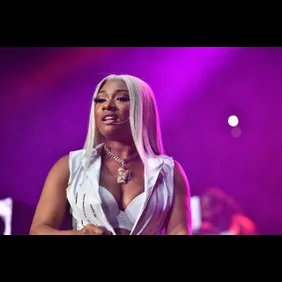
After releasing several singles and a mixtape, Megan inked a deal with 1501 Certified Entertainment, headed by Carl Crawford. Her subsequent fallout with her label has been well-documented as they have been entangled in litigation for years, but that hasn’t slowed Megan’s hustle. “Big Ole Freak” was her Tina Snow breakout hit that launched Thee Stallion to new heights, and her career has yet to falter. Even with the ongoing legal battle with Tory Lanez and the public scrutiny Megan has faced because of it, the 2019 XXL Freshman has gone on to pen hits with Beyoncé (“Savage (Remix)”), Cardi B (“Wap”), DaBaby (“Cry Baby” and “Cash Sh*t”), Ariana Grande (“34+35 (Remix)”), as well as standing on her own on viral favorites like “Thot Sh*t” and “Body.”
Her Hotties have made sure that Megan stays encouraged, especially after the 27-year-old rapper lost her mother, Holly Thomas, and her grandmother within the same month in 2019. Despite the tragic setbacks, Megan pushed forward, and once her management deal with Roc Nation was set, there was no stopping her from reaching that coveted “icon” status. Her sexually-charged, explicit lyrics have often made her a target of naysayers, but Thee Stallion isn’t letting up on her reign anytime soon.
Doja Cat
As an artist who has been surrounded by creatives since birth, Doja Cat’s fame doesn’t come as a surprise. She reportedly lived in a commune as a child under the tutelage of Alice Coltrane, her mother is a graphic designer, her father is an actor, her aunt is a vocal coach, and Doja studied dance for years, even joining a pop-locking crew where she participated in dance battles. It would take some trial and error before she would become a global pop-rap superstar, but Doja Cat was a viral sensation before her name was printed on any Billboard chart.
It seemed that Doja was finally ready to reach new heights when she inked a deal with Kemosabe Records, an imprint of RCA Records, but her 2018 debut studio album, Amala— her first name— wasn’t as successful as hoped. However, months later, Doja released her nonsensical song and video “Mooo!,” and surprisingly, it created such a stir that audiences began zeroing in.
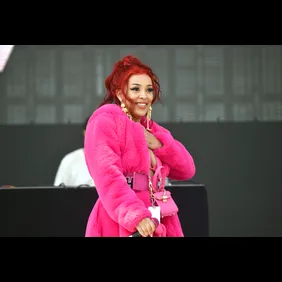
Her sophomore album, Hot Pink, redefined Doja Cat’s marketability and her TikTok hit “Say So,” along with its No. 1 remix featuring Nicki Minaj, paved the way for more unrelenting chart-topping tracks to follow: a feature on Saweetie’s “Best Friend,” an appearance with Megan Thee Stallion on Ariana Grande’s “34+35,” “Kiss Me More” with SZA, “You Right” alongside The Weeknd, and “Streets,” a single that is on its way to being named a Doja Cat classic. She's been called the next global superstar to take over the industry and if she keeps up with this momentum, Doja Cat is slated to one day sit in the seat bestowed to music legends.
Honorable Mentions: Rapsody, Chika, Latto, Young M.A, Lizzo, Coi Leray, Saweetie, Rico Nasty, City Girls, BIA, Tierra Wack, Erica Banks, Flo Milli, Ken The Men, Tokyo Jetz, Kali, Omeretta The Great, Enchanting, Kaash Paige, Big Jade, Armani Caesar, Azaelia Banks, Asian Doll, Renni Rucci, Rubi Rose, Baby Tate, Kash Doll, Heather B, Dej Loaf, Lil Mama, Kamaiyah, Leikeli47
